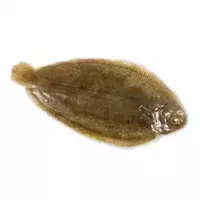Fish sea tongue

The sea tongue fish belongs to the order of the soleiform family of soleiaceae, so in appearance it is very similar to the flounder. Laterally, the body of the marine tongue is flattened, only more oval and oblong. Both eyes of the fish are located on the same side, since the sea tongue often lies on the seabed. The size of the fish sea tongue can be said small - quite rarely exceed 30 centimeters in length.
In cooking with fish, the sea language is often experimented with, preparing dishes from the most elementary to the most refined. The meat of this fish is perfectly combined with a variety of sauces, including wine-based ones. Basically, it is customary to fry or bake sea tongue. The choice of prepared dish, as a rule, depends on the size of the fish. For example, a small sea tongue can be deep fried whole. Medium-sized fish are roasted in a pan or grill, pre-dipped in breadcrumbs or batter.
The classic dishes of Italian cuisine are sea-tongue fish, which is cooked in white wine with fortified marsala. The chefs of Catalan Spain fry these fish, and a sauce based on oil from olives and strained tomatoes, garlic, onions, almonds, sweet peppers and chili peppers is served for the ready-made meal. In England, sea tongue fish is fried in butter and fall to the table with french fries.
The Benefits of the Sea Language
The benefits of the marine language for human health are evident primarily because it refers to dietary foods. So, the calorie content of the sea language is only 88 kcal, and this is quite a bit. In addition, the marine tongue is recommended to be used with low acidity due to the fact that it increases appetite, contributing to the release of gastric juice.
With regular use, the benefits of the marine tongue are also that metabolism is normalized, toxins are eliminated, and the condition of blood vessels improves. Thus, the prevention of diseases such as psoriasis, sclerosis, stroke and heart attack occurs. The marine tongue is recommended in the presence of thyroid problems due to the content of iodine in this fish.
Marine Language Harm
The harm of the sea tongue can only make itself felt if the fish was grown in artificial reservoirs using feed, which mixed not only antibiotics and growth stimulants, but also genetically modified substances. Thus, chemical compounds dangerous to human health were repeatedly found in fish consignments that came from Vietnam.
fish sea tongue 88 kKal
The energy value of fish is sea tongue (Ratio of proteins, fats, carbohydrates - ju):
Proteins: 10.3 g (~ 41 kCal)
Fats: 5.2 g (~ 47 kCal)
Carbohydrates: 0 g (~ 0 kCal)
Energy ratio (b | y): 47% | 53% | 0%
 Español
Español Français
Français Português
Português Русский
Русский 简体中文
简体中文 繁體中文
繁體中文 日本語
日本語 한국어
한국어 العربية
العربية Türkçe
Türkçe Қазақ
Қазақ Deutsch
Deutsch Italiano
Italiano Українська
Українська
